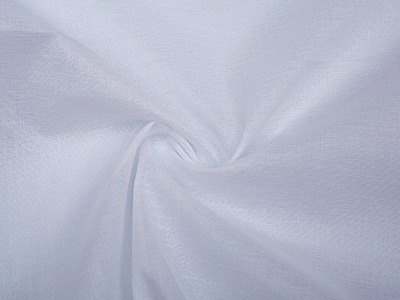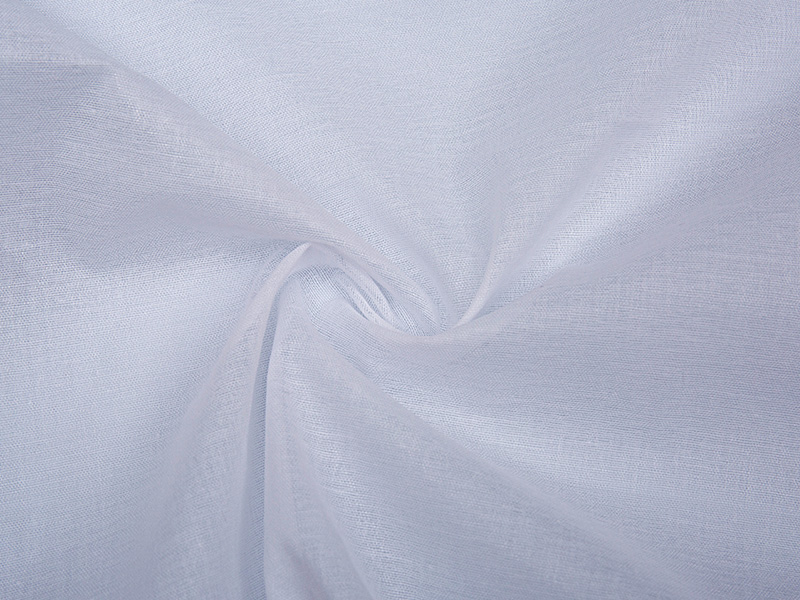Pocketing Fabric Explained: Methods, Materials & Uses
2025-08-12
Understanding Pocketing Fabric and Its Role in Apparel
Pocketing Fabric is a specialized textile used primarily to construct the interior parts of pockets in garments. While it may not be visible from the outside, pocketing fabric plays a critical role in determining the strength, comfort, and durability of a pocket.
In apparel manufacturing, pocketing fabric is selected based on several factors: the garment’s purpose, fabric compatibility, and the expected level of wear and tear. A high-quality pocketing fabric ensures that the pocket can hold small objects securely without tearing, stretching, or losing shape.
Key Functions of Pocketing Fabric in Apparel
- Structural Support – Reinforces the pocket area, preventing distortion.
- Durability – Withstands frequent use, washing, and weight from stored items.
- Comfort – Provides a smooth and breathable surface against the skin.
- Aesthetic Integration – Matches or complements the outer fabric for a cohesive look.
Common Pocketing Fabric Types and Their Properties
| Fabric Type | Typical Fiber Content | Weight (gsm) | Strength | Breathability | Typical Use Cases |
|---|---|---|---|---|---|
| Cotton Twill | 100% Cotton | 150–250 | Medium | High | Casual pants, workwear |
| Polyester Blend | 65% Polyester / 35% Cotton | 120–200 | High | Medium | Uniforms, jackets |
| Plain Weave Cotton | 100% Cotton | 100–150 | Medium-Low | High | Lightweight trousers |
| Nylon Taffeta | 100% Nylon | 80–150 | Very High | Low | Outdoor gear, sportswear |
| Recycled Polyester | 100% Polyester (recycled) | 120–180 | High | Medium | Sustainable apparel |
Factors Affecting the Choice of Pocketing Fabric
- Garment Type – Workwear may require stronger polyester blends, while summer wear benefits from breathable cotton.
- Pocket Function – Decorative pockets need lighter fabric, functional storage pockets require more robust materials.
- Washing Frequency – Fabrics with higher polyester content tend to resist shrinkage and wrinkling better.
- Environmental Goals – Sustainable options, such as organic cotton or recycled polyester, are increasingly favored in eco-conscious apparel production.
The Ultimate Guide to Pocketing Fabric: Techniques, Types, and Applications
Pocketing Fabric is the hidden yet essential component that determines how well a garment’s pockets perform over time. From the choice of materials to the manufacturing techniques, each factor influences durability, comfort, and usability. This guide covers the main techniques, fabric types, and applications for pocketing fabric in apparel production.
1. Techniques Used in Pocketing Fabric Production
Pocketing fabric is created through various weaving and finishing processes, each with unique benefits:
| Technique | Description | Advantages | Common Drawbacks |
|---|---|---|---|
| Twill Weave | Diagonal weave pattern with durable texture | High strength, resists wear | Slightly heavier, less breathable |
| Plain Weave | Simple crisscross weave | Lightweight, breathable | Less durable under heavy loads |
| Sateen Weave | Smooth, lustrous surface | Comfortable, soft touch | Lower tear resistance |
| Ripstop Weave | Reinforced threads at intervals | Very strong, tear-resistant | Stiffer feel |
| Brushed Finish | Fabric surface brushed for softness | Comfortable, warm | May pill with time |
2. Types of Pocketing Fabric
| Fabric Type | Fiber Content | Weight (gsm) | Best For | Durability |
|---|---|---|---|---|
| Cotton Twill | 100% Cotton | 150–250 | Workwear, trousers | Medium-High |
| Poly-Cotton Blend | Polyester/Cotton | 120–200 | Jackets, uniforms | High |
| Nylon Taffeta | 100% Nylon | 80–150 | Outdoor gear | Very High |
| Organic Cotton | 100% Cotton | 120–180 | Sustainable fashion | Medium |
| Recycled Polyester | 100% Polyester | 120–180 | Eco-conscious designs | High |
3. Applications of Pocketing Fabric in Apparel
- Casual Wear – Jeans, chinos, and shorts often use durable cotton twill or polyester blends for long-lasting pockets.
- Formal Wear – Suits and dress pants may use lightweight, smooth fabrics for comfort and elegance.
- Workwear and Uniforms – Require heavy-duty fabrics to hold tools or personal items without tearing.
- Sportswear and Outdoor Gear – Use water-resistant or quick-dry fabrics for added functionality.
- Sustainable Apparel – Increasingly made with organic or recycled fibers to reduce environmental impact.
Pocketing Fabric Materials and Their Properties
Pocketing Fabric can be made from a wide range of natural and synthetic fibers, each offering unique performance characteristics. The choice of material affects the strength, comfort, breathability, and durability of the pocket, which in turn impacts the garment’s overall quality.
When selecting a pocketing fabric material, apparel manufacturers consider the intended use of the garment, the weight and texture of the outer fabric, and the expected level of wear and tear.
1. Common Materials for Pocketing Fabric
| Material Type | Fiber Source | Weight Range (gsm) | Strength | Breathability | Moisture Resistance | Typical Use Cases |
|---|---|---|---|---|---|---|
| Cotton | Natural (plant fiber) | 100–180 | Medium | High | Low | Casual pants, shirts |
| Polyester | Synthetic | 80–150 | High | Medium | High | Sportswear, uniforms |
| Nylon | Synthetic | 70–120 | Very High | Low | Very High | Outdoor gear, bags |
| Poly-Cotton Blend | Synthetic/Natural mix | 120–200 | High | Medium-High | Medium-High | Jackets, workwear |
| Linen | Natural (flax fiber) | 120–160 | Medium | Very High | Low | Summer garments |
| Recycled Polyester | Synthetic (recycled) | 100–160 | High | Medium | High | Sustainable fashion |
2. Factors Affecting Material Selection
- Durability Requirements – Workwear and outdoor gear often need high-strength polyester or nylon.
- Comfort and Breathability – Summer clothing benefits from cotton or linen pocketing fabric for airflow.
- Moisture Management – Sportswear uses synthetic fibers that dry quickly and resist water.
- Sustainability Goals – Eco-conscious brands may opt for organic cotton or recycled polyester.
- Fabric Compatibility – The pocketing fabric’s weight and texture should match the garment’s outer fabric to avoid distortion or bulkiness.
3. How Material Properties Influence Performance
- Strength – Determines how much weight the pocket can hold without tearing.
- Breathability – Affects wearer comfort, especially in warm climates.
- Moisture Resistance – Important for garments exposed to rain or sweat.
- Shrinkage Resistance – Synthetic fibers tend to hold shape better after washing.
Pocketing Fabric in Fashion Design and Manufacturing
In the world of apparel, Pocketing Fabric is more than just a hidden component—it plays a vital role in both the design aesthetics and functional performance of garments. The choice of pocketing fabric influences a garment’s weight, feel, breathability, and durability, while also contributing to its long-term wearability.
Fashion designers select pocketing fabric not only for its strength but also for its compatibility with the outer fabric, ensuring that pockets maintain their shape and comfort even under frequent use. In manufacturing, pocketing fabric must withstand cutting, sewing, washing, and daily wear without compromising its performance.
1. Design Considerations for Pocketing Fabric
- Aesthetic Harmony – Pocketing fabric should complement the garment’s color palette, texture, and style.
- Functional Purpose – Different clothing categories require different properties, from lightweight comfort to heavy-duty resilience.
- Sustainability Goals – Increasing demand for eco-friendly materials, such as organic cotton or recycled polyester, is shaping pocketing fabric choices.
- Cost Efficiency – Designers balance material quality with production budgets to achieve optimal results.
2. Manufacturing Aspects of Pocketing Fabric
The production of pocketing fabric involves multiple processes, including weaving, dyeing, and finishing. Quality control at each stage is essential to ensure consistency in weight, texture, and performance.
Example of Material Specification Ranges in Manufacturing
| Property | Lightweight Pocketing Fabric | Medium-Weight Pocketing Fabric | Heavy-Duty Pocketing Fabric |
|---|---|---|---|
| Weight (gsm) | 80–120 | 130–180 | 190–250 |
| Fiber Composition | Cotton, Polyester, Nylon | Cotton/Polyester Blends | High-Tenacity Polyester, Nylon |
| Tensile Strength | Medium | High | Very High |
| Breathability | High | Medium-High | Medium |
| Common Applications | Dress pants, light jackets | Casual wear, uniforms | Workwear, outdoor gear |
3. Hetai Textile’s Role in Pocketing Fabric Production
Founded in 2002 and based in Jiangsu Province, China, Hetai Textile has developed into a comprehensive enterprise specializing in the development, production, sales, and service of interlining fabrics, including Pocketing Fabric.
With in-house weaving, dyeing, and coating workshops, along with advanced production lines and a highly skilled technical team, Hetai Textile ensures that its pocketing fabrics meet stringent quality standards. The company actively innovates to stay at the forefront of material technology, focusing on:
- Precision weaving for uniform texture and strength
- Eco-friendly dyeing processes to support sustainable fashion trends
- Customized coating techniques to enhance durability and functionality
By combining customer-focused service with a robust quality control system, Hetai Textile provides pocketing fabric solutions tailored to the diverse needs of apparel designers and manufacturers worldwide. The company is committed to working closely with partners to deliver fabrics that meet both performance and design expectations.
Contact Us for More Details
Don't hesitate to contact when you need us!


 English
English  中文简体
中文简体 









